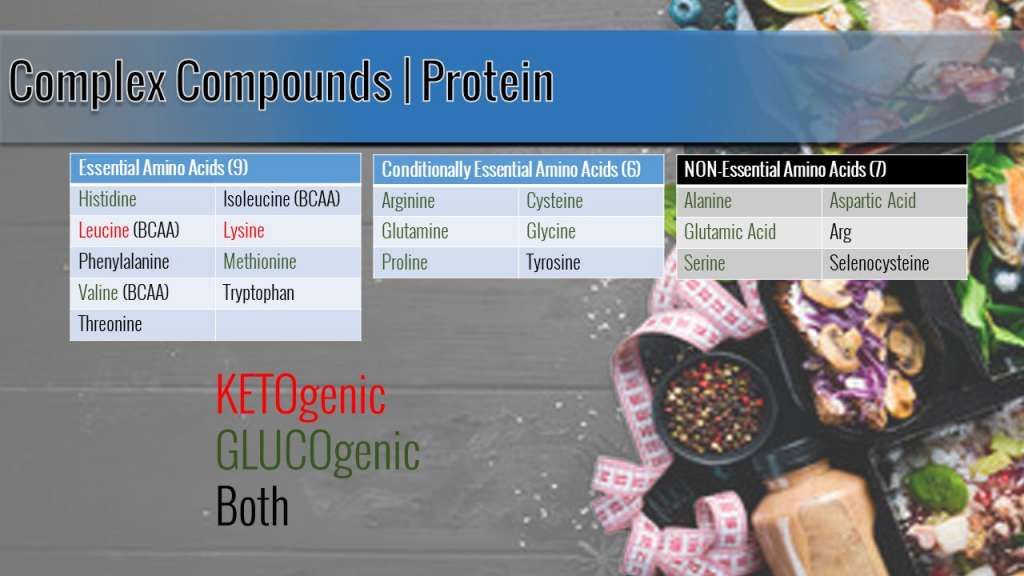Protein, protein – protein sources versus Supplements
One of the single most surprising tenancies in the gym world involves your love of protein.
If you’re reading this, you care about your habits, eating and your nutrition & fitness.
Thus, you’ve been exposed to protein supplements inside the gym or outside at Whole Body, bodybuilding.com or the infinite retailers of the omnipresent powder.
You may have drank some yourself.
Again it’s surprising to see the faces of the completely different inquirers of protein powder ask me, “just how much…”. These different people ran the range including the super strong and powerful, the meeker lean-built, the septuagenarians, the hi-level all-time athletes, the vegetarians – it looks like all of you are protein-hunters.
As you should be!
If you workout, if you train and you crave goals, you must eat protein.
As an easy rule you can use today, remember to cover two-thirds of your plate with protein versus one-third complex carbs, after a lifting-heavy training day.
I have even been “questioned” as to why I would “promote” supplements as a coach.
The answer is simple: literally every type of exerciser needs it, and thus has been exposed to it.
There simply is no questioning this. Anyone who spends their weeks in the gym knows this.
Why not help people get the best protein IF and only IF they know for certain you’ll take supplement. I am not here to slap your hand away or crush your ideas.
But, before you jump into the supplement isle and hunt down the perfect tub, we have to ask a more fundamental question.
Do you even need protein supplements?
Meaning: is it more possible and easier to track down your 90 – 180 ish grams per day through other protein sources like whole foods. Those foods which measure as the best protein sources on the planet like the big 3.
- Meat
- Yogurt
- Eggs
Mostly, you should be actively denying yourself protein supplements and sticking with whole food protein sources!

And, seriously-speaking, most should not even waste their money.
Because, there are 3 qualifying features of the protein lovers and supplement drinkers.
1. Your goals matter
2. Your efficacy with eating patterns
3. Your budget
For now, understand that you’re not the only one.
My trainees: men and women, old and young, hard and soft-core seemingly want to take down protein supplements.
So let’s break it down.
1) Do you need Protein Supplements at all?
2) Protein ratios and cost Analysis
3) Protein supplement master Review
4) Protein Timing
5) Protein supplement ingredient list Breakdown[/vc_column_text][/vc_column_inner][/vc_row_inner][/vc_column][/vc_row][vc_row][vc_column][vc_row_inner][vc_column_inner][vc_column_text]
Protein ratios and empty Pockets
Ok, let’s figure this out.
First, let’s discuss the three main protein considerations.
Purchasing protein powder
Buying your supply of protein supplements with groceries will add a significant amount of cost to your grocery budget.
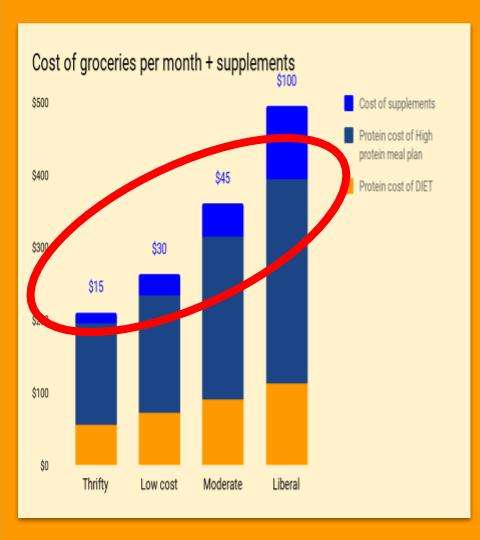
I have personally sold the smallest package of high quality 10 gram protein at about $2 for single use. Of course, some protein shakes, ready made will run you about 3.50 (they’ll be higher calories, too).
Multiply this out to three to six times per week (2 per workout) and your minimum cost of food will increase to $15.
Since, you’re temporarily supplementing, you need way more than a single use-single week supply.
Scale for 15, 20, or more grams per portion and for other brand names. You cost goes up a lot.
Protein rich foods and protein rich supplements
Protein rich foods include the usual meats and yogurts.
What about protein rich supplements?
As well will get into a little bit later, most of your protein supplements are not created equally.
At all.
In fact, most of your protein supplements typically have two aspects in common with one another.
- Contain protein
- Average about 7 grams protein per 15 grams of “powder”
We are focusing on powders because they’re the most convenient and the easiest to incorporate into our eating.
Looking then at powders, we find something intriguing.
According to Efficiency is Everything the amount of protein rich food supplement you get for your buck is with Muscle Milk, a gym staple.
Consider, as we carry on later, that this supplement is higher in calorie and essential can be a whey protein meal replacement.
For the record, I never suggest protein supplements as replacements. It’s just a bad idea.
Companies still create vitamin rich protein shakes and yes, intimate they are replacements.
Know that the non-replacement proteins, like rice, hemp, soy and even bone broth proteins, are not listed on this list.
And, more quality brands, which pride themselves on mostly organic and natural protein sources are not on this list either.
Essentially, you get the most protein for the less money but questionable food practices and quality at the same time, unfortunately.
Again, you must consider your goals – as we will cover later.
Consider your usage accordingly – adjust your ratios.
Adjusting your protein ratios with a nutritionist or coach is key for weight loss. It is also key for performance gains and body fat percent loss.
In fact, adjusting your ratios, namely your protein ratios is the smartest means of carb-cycling. Carb-cycling is not the domain of athletes looking for performance, nor the domain of those looking to lose weight.
Instead, you should always alter your ratios.
You’ll start by altering your protein ratios first – always.
Not carbs, like bad carb-free diets.
Not fat, like bad Paleo diets.
This is a simple rule. It safeguards against dieting as we never automatically look to reduce protein. When protein ratios are low (10%-15%) they’re really just at normalized – non-workout – levels.
Furthermore, the range at which we adjust is relatively small – a 20 point threshold – low:15% to high %35.
Protein recommendations are Wild
I recommend you adjust your ratios.
During exercise weeks and cycles, adjust toward 25% or 30% of your total calories in protein.
You can easily derive some smart results from here.
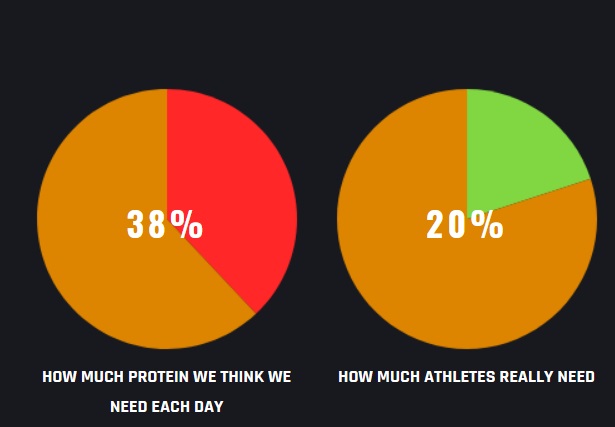
110 grams of protein!
This is the equivalent of 16 eggs, 3 quarter pound hamburgers, or 15 cups of regular pasty milk.
And, consider the stature and goals of this 1800 calorie person.
He might be a 180 pound cyclist looking to drop body fat safely by putting on some lean muscle and lifting.
Or, maybe a 145 pound women, who does jiu-jitsu and is maintaining her weight through kettlebell and bodyweight training.
Both folks require lots of protein to assist in building lean muscle. And, if these are highly active people, they should be actively working out semi-daily.
So why do protein recommendations vary into the absurd.
I once witnessed a former MMA coach advise a Twitter follower they should be consuming 2 grams per pound of bodyweight.
Ridiculously, this is probably reserved for powerlifters like Hafthor Bjornson and never anyone who doesn’t perform his arenas – at all.
Sometimes, I’ll hear a recommendation for 2 grams per kilogram and still wince.
Look, just adjust your ratios.
It’s smarter, safer and doesn’t obliterate your food choices like diets and bad protein recommendations will.
multiple types and protein Examples.
Protein supplements are as nearly ubiquitous as whole food protein sources are. What an inconvenient truth!
Consider Whole Foods – the organic-loving whole food retailer – and it’s adjacent supplement retailer, Whole Body.
Despite protein supplements’ sheer omnipresence, there are LOTS of protein examples out there for the buying based on preference and need.
For instance.
Vegan and vegetarians might need extra protein sources from foods and so they will search for protein vegetarian sources like buckwheat, miso, tofu, polenta, chutney and soy.
Yet, protein vegetarian supplement sources exist too.
Some are blended and others comes from yellow pea protein.
Meat eaters, omnivores and other love to consume their eggs and dairy. So takings casein and egg-white formula which are organic and natural, work fine.
Be appraised: there are dozens of proteins and concentrates.
But, we still must consider first physically eating whole foods for protein sources – not from supplements.
Organic and Non-organic protein examples
Whole food protein sources come in both organic and non-organic varieties, clearly.
Generally speaking, organic foods have a whole battery of qualifying features.
These features make “organic” monikers the healthier of the two.
Some aspects include: animal cruelty-free, locally raised/grown, naturally grazed/fed etc.
The result, in theory, is a “happier” and “cleaner” livestock which is slaughter humanly.
Better taste, complete nutrient statuses, more along the line of human bodies are our results from the “extra” attention given to organically raised food.
Really, organic raising in protein foods sources like meats, dairy and legumes serves to differentiate its practice from non-organic.
(The Omnivore’s Dilemma by Michael Pollan outlines this greatly.)
Protein supplements are similarly both organic and non-organic.
Generally, organic protein powders are:
- More pricey
- Less likely to be meal replacements
- Less likely to be casein or whey
- Contain less protein per scoop
Having less protein per serving and also containing a higher cost per calorie can be a confounding problem for those exercisers who need the “higher quality” protein supplements.
And, really, that’s what you have to figure out.
Ask:
- Do organic foods really matter to you?
- What does protein quality mean to me?
- Am I okay with a more frequent consumption rate as I might need more servings to get to, say, 100 grams per day?
Protein quality as it pertains to supplements just means you get LOTS of vitamins and nutrients inside your supplement. And, we have to know that this protein is a complete protein.
We will discuss it later, but protein quality as it pertains to completeness simply means the protein contain all the non-essential amino acids
Basically, cost and quality of nutrients most be the utmost to you. If so, you will opt for organic foods which match your preferences.
Then, if you need to make the addition to temporary protein supplementation, you’ll need to head over the organic protein powder prepared to spend a premium.
Master Protein Powder Review
Protein powders dominate the landscape of supplements.
Let’s build a smart protein powder review which covers all of the bases you’ll see inside Whole Foods, on bodybuilding.com and inside the drugstore where these powders sell.
Clearly, there are dozens of powder manufactures. There are scores of protein supplement brands and usages. And there exist many types of blends.
And, there are about ten types of protein powders.
- Casein
- Hemp
- Soy
- Cricket (not covered here)
- Whey
- Rice
- Bone broth
- Blended
- Pea
- Probably more
Upon figuring out which type you need, you’ll have to figure out the amount. Mostly, you will find 7 grams of protein per 15 grams of powder. Still, the scoop sizes WILL differ.
After that, we have to figure out the blending. This confers a more digestible solution in the way of certain mixes.
Choose a supplement that tastes great to you and is essentially organic as possible and from a quality Brand.
- NOW Sports
- Optimum Nutrition
- NutriBiotic
- Pure Protein
These are my favorites – brands I have purchased wholesale protein from and do trust.
Ultimately though, if you don’t NEED protein and haven’t thought about eating whole foods for your protein, taking supplements is a moot point. You gotta go back and eat whole meals.
PRotein Sources by the whole food
Before we jump into determining what powders you’ll take, let’s take time to finalize your decision.
We’ve determined that you are a specific eater. One who’s protein consumption will be limited because of:
Choice dieting for performance
- Eating practices of faith
- You loath a huge swath of natural whole food sources
- Are extremely vegan or vegetarian
Eating a diet for performance gains.is the domain of the few. And it’s temporary. Avoid unless you’re a caliber of athlete who’s been given clearance and guidance to proceed.
Whole foods like those from meats account for th largest portions of protein high foods. Essentially, if you decide to skip eating meat, you will find that your protein need will be met only through increases in portion size.
Still, tofu, tempeh, eggs and the like are amazing sources.
Lots of beans and other legumes such as peanuts can be complete proteins.
Complete proteins are those which contain a battery of amino acids which we need to live.
Further, if you are a vegan or vegetarian, there are a lot of “under appreciated” sources for protein.
Buckwheat, chutney, porridge and polenta are just some of the few.
Time to get some practice in on those cooking methods!
And, consider the protein you get from these whole food sources will include other nutrients antioxidants, healthy macros and other naturally occurring nutrition combinations that occur naturally in nature.
Essentially, no natural source of food will contain both extremely low amounts of carbs but ridiculously high about of B12 or protein as examples.
This is when supplements will bear the standard for mega-dosing.
Walking into the supplement isle
So many stores now have their own supplement isles.
This is simply a reality – mere feet from the produce section and the freshly procured meats, are their powders distant relatives.
Those manufactures often produce powder which mimic a snack or a meal.
And so walking down this isle will in fact be harrowing from some, especially if it’s your first jaunt.
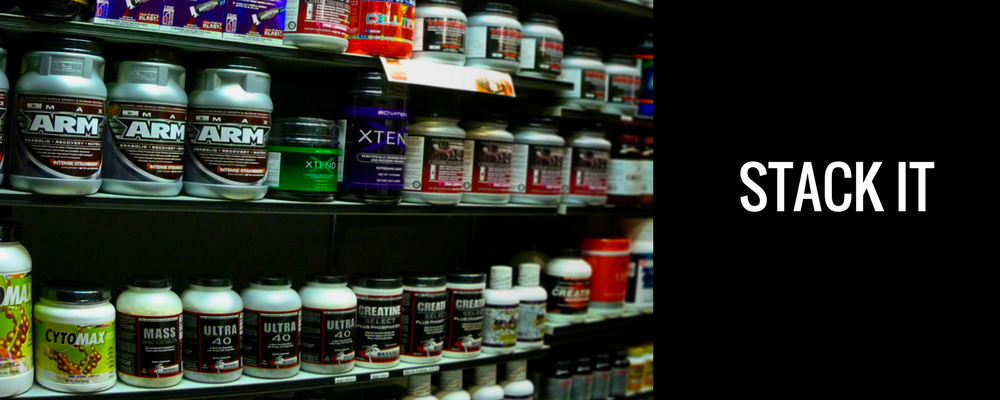
Each make slightly differing claims to provide the best nutrition.
All of the protein supplement you see ARE SLIGHTLY DIFFERENT, though just barely.
Firstly, let start with the broadest differences.
Protein supplements by protein source type
Ideally, in today’s market you’ll see about 10 types of protein.
Plant based proteins include rice and soy, while whey and casein are sourced from dairy.
Watch the master protein review to learn the detail of all the types.
HERE
Let’s try to group them all together in broader strokes.
Hemp, rice, eggwhite, bone broth, pea and blended sources are the most primarily organic protein sources.
These powders are your best chance to encounter proteins which are minimally processed. These are mostly organic to the end where INorganic forms of them probably have very little market share or shelf space.
Why would you buy inorganic versions of powder which easily – via grinding and sifting – becomes powders.
Consider there sources, too, as the closest relatives to food sources.
Instead of drinking your rice protein, just incorporate rice into a snack or post-workout
Of course, you will almost never do this with hemp!
Almost. Future technologies and processing methods arrive quicker and quirkier with each passing moment.
Casein and Whey are Rivals
In the world of powerlifting and bodybuilding, these two hold sacrosanct ground.
I mean, in the 90’s, these were the first two types of protein I ever heard of, as did many gym lovers.
Casein built muscle “over duration” and was slowly released, as goes the mantra.
Casein was incorporated into the globule at the molecular level and so it must be dismantled before digested. This takes eight hours, according to urban legend.
And as such, is perfect for muscle building – anabolism – during sleep.
Whey was the complete opposite so, during your workout, you could polished off your bottle and finish your workout still having protein circulating in your muscles.
So the story goes.
Truly, there is ZERO difference other than the source.
It is like filling your pillow with duck feathers or chicken feathers and measuring its fluffiness.
It simply does not matter to the operator.
While casein takes longer to metabolize, so too will your body metabolize all protein and anabolism is never instantaneous.
Protein examples of food engineering & blending
Some of the buckets and packets you’ll see are highlighted by the “blending” method.
Micronized, concentrate isolate, or other means are posted right there on the front panel.
To the consumers looking for any protein, these methods means nothing.
However, if you’re using supplements, you need to understand the differences.
As we mentioned before, supplements of protein are sourced from dairy, animals or plants.
The ones like casein and whey which come from dairy carry with it an infamous ailment – indigestion.
Many people suffer from ingestion of lactose and their by-products including lactose.
If you are lactose intolerant, the range of indigestion includes illness to stomach ache.
Lactose, a milk protein can be digested, partially digested or eliminated from the protein. These protein supplement manufacturers understand than whey and casein pound-for-pound, have the highest source of protein.
Instead of excluding their use, food engineers simply partially digest some of the protein linkages.
Remember, the protein monomer – the individual pieces – of proteins are amino acids, which carry a positive or negative charge. As such, they can exist in some form attached to other amino acid clusters.
And, the protein structure of each group of polypeptides, or amino acid chains, can change.
Without finishing a full biology lesson, such “clumps” of protein can be rough on the GI tract of certain consumers.
So, why not digest – hydrolyze – or sift out the clumps – isolate, micronize – the protein?
7 grams of protein per 15 grams of powder
Once you go grab your protein, you’ll immediately need to spin it around and read the back panel.

I could say: 1 heaping scoop, 1 level scoop, or anything, like 1 handful, 1 cupful, a whole lot.
Whatever.
That;s because most proteins are about 7 grams per 15 grams of powder.
Some protein sources of supplements will determine this to equate to a huge scoop. That scoop could be the size of a coffee mug.
As you glance down, you’ll see that serving size and that scoop equal a certain amount of protein.
Whey, broth, blended pea and sometimes casein varieties will have the most protein per serving typically.
Protein timing: not necessary at all
Before or After – protein supplementation and the decision to take protein blankets your workout like the peel of a fruit.
In reality, we must remember that this decision and its subsequent debating is best left answered by science.
According to one study from 2017, “Pre- versus post-exercise protein intake has similar effects on muscular adaptations” (1), the is NO DIFFERENCE. You should not be surprised.
Your body doesn’t care when you metabolize your food. The net calories you put in mean the most. Not when those net calories yield a return.
Our bodies treat protein supplements like gasoline and fuel the system as long as there is some of the substrate available.
Your car (non-Tesla drivers et al.) doesn’t care WHEN you gas her up. It doesn’t burn better (significantly) in the morning than the night with regards to gas.
You body metabolizes all the protein you give it.
We CREATE the deficit by lifting hard and heavy, or hard and intensely. That’s it.
Still, you could draw upon some smart reasons to take protein both for before, and for after. Still, as athletes, exercisers, badasses and the rest of the ilk, we defer to HABITS.
Assist your habits. For example, we almost always eat AFTER any workout. So, maybe it’s best to get your protein in then.
Yet, if your workout is early in the day, maybe your protein supplements are your pre-workout too, or maybe a snack.
Protein Before a Workout
Your workout is a blip in your day.
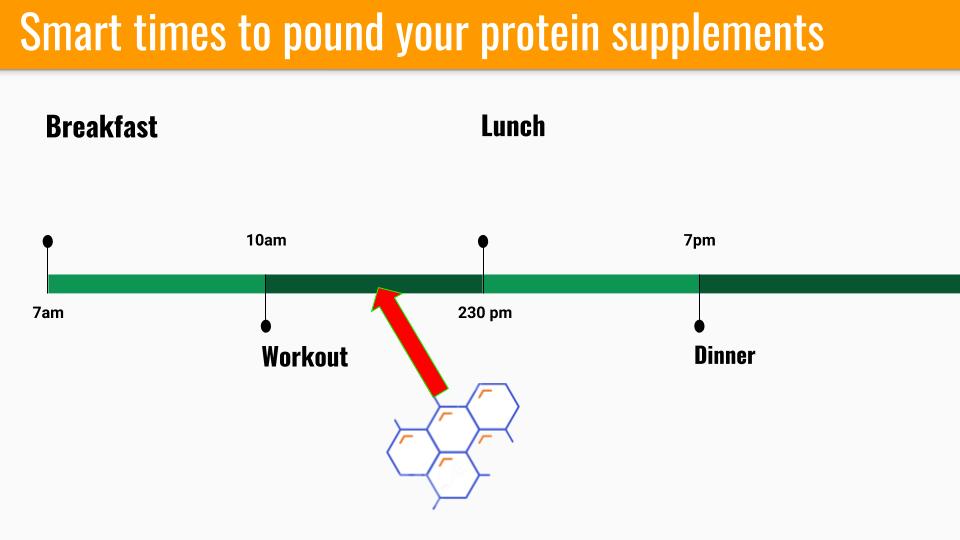
When do need to workout, you inherently have to prepare, at least a little.
The workout is the change in your day and it makes you decide when and what to eat later.
Such a habit require nuance of course, which is why coaches like me have been employed for nearly two decades!
Still, you have to prepare.
Before you might decide you have to fuel your workout in some order.
This way, you have a successful workout free of injuries, even if that workout has been the same for many weeks or even longer. You’ll eat extra or otherwise differentiate your eating to accommodate your workout.
Smartly, you’ll, again want to fuel your workout.
Morning workout fuel
If you workout earlier in the morning, like with Jean, a woman who used to come in to train with me at 5 am and later Brittany, her successor at 6, you might not eat breakfast at all.
But, if train with me, you’ll definitely be urged to eat, or drink your breakfast.
So, you’ll want to fuel with maybe 100 calories of carbohydrates mostly before.
Afterward you’ll eat breakfast and the rest of your meals.
This includes your magic number of protein rich foods – meat, tempeh, pumpkin seeds and chickpeas for the remaining meals.
Supplementing here might not even need to happen.
But, if you do, you can easily supplement anytime throughout the day, knowing, there is no TRUE window with which ti replenish.
Midday Workouts
By 1030am to 230pm, the middle of the day, you will have fueled your life and work. You meals should contain protein rich foods of description. It is imperative.
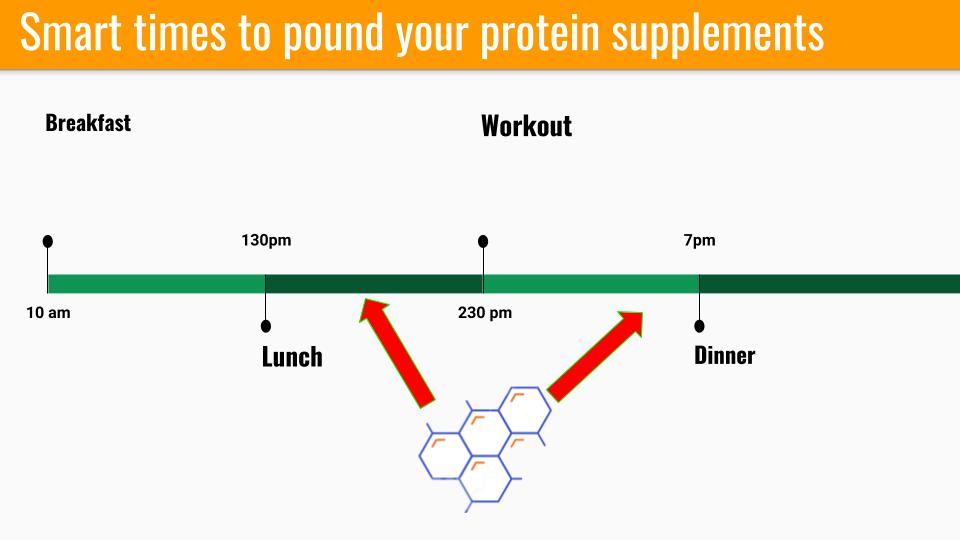
You’ll have to then include some kind of carbohydrate to include as hearty fuel.
LATE DAY WORKOUT

You should taken your protein or protein supplement before.
But, if you have protein high foods like turkey pasta and red bean salad waiting post-workout, you will have to consume this pre-workout. But, your lunch will have to be very light.
Light lunches, my bare essential prescription – is a must here. Unless you are looking to gain mass.
Even then, you should remember:
Protein supplements are not legit meal replacements
Protein after a Workout
Of course, recovery should be the goal of all performance workouts. This is because the better your recovery, the more muscle mass you sustain and aggrandize.
Further, this is sustained through great recovery – replenishing glycogen and depleted proteins to your frame.
If you take protein after a workout, you are looking to either:
- Split your protein into two parts
- Drink your protein as a snack
Snacking is smart. I keeps your metabolism high which assists in fat loss.
And, snacking supports your decision to eat regularly to maintain weight, performance and strength inside the gym because your blood sugar regulates itself.
Protein as a snack after your workout is a smart way to consume all your protein.
It simply supports the habitual post-workout eating pattern you no doubt maintain now.
And, typically, folks feel the hunger sensation after a workout.
Simply stated:
Consuming protein supplements after a workout aids your healthy Habits rather than capitalizes on some ‘window’.
[/vc_column_text][/vc_column_inner][/vc_row_inner][/vc_column][/vc_row][vc_row][vc_column][vc_row_inner][vc_column_inner][vc_column_text]
What’s inside the bucket: protein supplement ingredient breakdown
The best rule of thumb for protein supplements is: don’t eat what you can’t pronounce.
That advice is a little suspect though.
After all, there are plenty of compounds worth their weight which are unpronounceable.
Still, a better rule might be:
Look for short ingredient lists.
And,
Check for organic compounds
Some organic compounds that exist on the back of lots of powders include
- Xanthan Gum
- Lecithin
- Bromlain
- Creatine
- Amino Acids
All of which are organic molecules.
Organic protein supplement ingredients.
Xanthan Gum
Believe it or not, xanthan gums exists in a natural form. It is essentially derived from the fermentation of small microbes. The result is something like a polysaccharide, or sugar.
Typically, xanthan gum is used to thicken sauces and as emulsifiers.
So, it is a very easily digestible food source created from organic life.
Lecithin
This is a substance which is isolated first from eggs and naturally occurs inside them.
Lecithin is termed a phospholipid or amphiphilic molecule.
This means it dissolved in both water and oily solutions.
Think about an egg yolk which seems to exhibit qualities of both oil and water. IT runny and also viscous.
Lecithin is used to mix water solutes into oil solutions or vise versa.
It’s an emulsifier.A naturally occurring one.
Bromelain
Occurring naturally inside the stems of fresh pineapples, this compound is an enzyme.
Enzymes make reactions happen.
It is water soluble – humans are mostly water – so this is great, and is a tenderizer and digesting molecule.
Bromelain might be used to hydrolyze protein powders.
Amino Acids
Amino acids are coded for by your DNA and are the functional building blocks of proteins.
There about 21 amino acids.
These amino acids are broken into many groups according to their chemistry and metabolsm.
L- or D-
If you where to draw an amino acid, it would have ahead and a tail. This is typically the carboxyl group or the amine side with one being the proverbial head in my example and the other side, the tail. They are anchor by a chiral carbon, or central.
L- mostly exist in nature and is essentially the mirror image of a D- amino acid around that central carbon.
When you buy amino acid supplements, you will nearly always see the L-form.
For example, L-Gluatmine, L-Arginine.
Essential and non-essential Aminos
Essential amino acids cannot be made inside our bodies’.
You must eat them to sustain life.
Here is a list of these amino acids.
Branch Chain Amino Acids (BCAA)
Valine , leucine and isoleucine are the 3 BCAA’s. One is ketogenic, one is glucogenic and one is both.[/vc_column_text][vc_facebook][/vc_column_inner][/vc_row_inner][/vc_column][/vc_row][vc_row][vc_column][vc_text_separator title=”Conclusions” color=”orange” border_width=”3″][vc_empty_space alter_height=”small” hide_on_mobile=””][/vc_column][/vc_row][vc_row][vc_column][vc_column_text]Protein sources from whole foods are the best forms of protein. Protein rich foods like meat, eggs and dairy offer enough protein to support the frames of athletes during competition. This is because the variety of wholes that are protein rich foods provide nutrient density and variety. Such variety support growth and health overall.
However, there are some exceptions. Those who carry alternative eating practices might need supplements. Further, those who need more than average need supplements too.
Still, this is a minority of users, athletes and exercisers really. And even further, this includes athletes – though maybe a majority of them, who will use supplements only temporarily.
Consider the cost of protein supplements. If you have a more conservation spending habit and access to minimal protein supplements which would support supplementation, you might spend at least $15 more per week at very minimum.
Then understand, you must practice discipline.
Next, you must familiarize yourself will the method for breaking down food labels fast. A solid food label tutorial will help.
From there, you can consider organic versus non, plant based versus animal sourced, and types of blending as your next reasonable choices.
Last, you must read the ingredients list to discover what other macros and micro nutrients linger inside your supplements. Ideally, look for organic and natural additives.

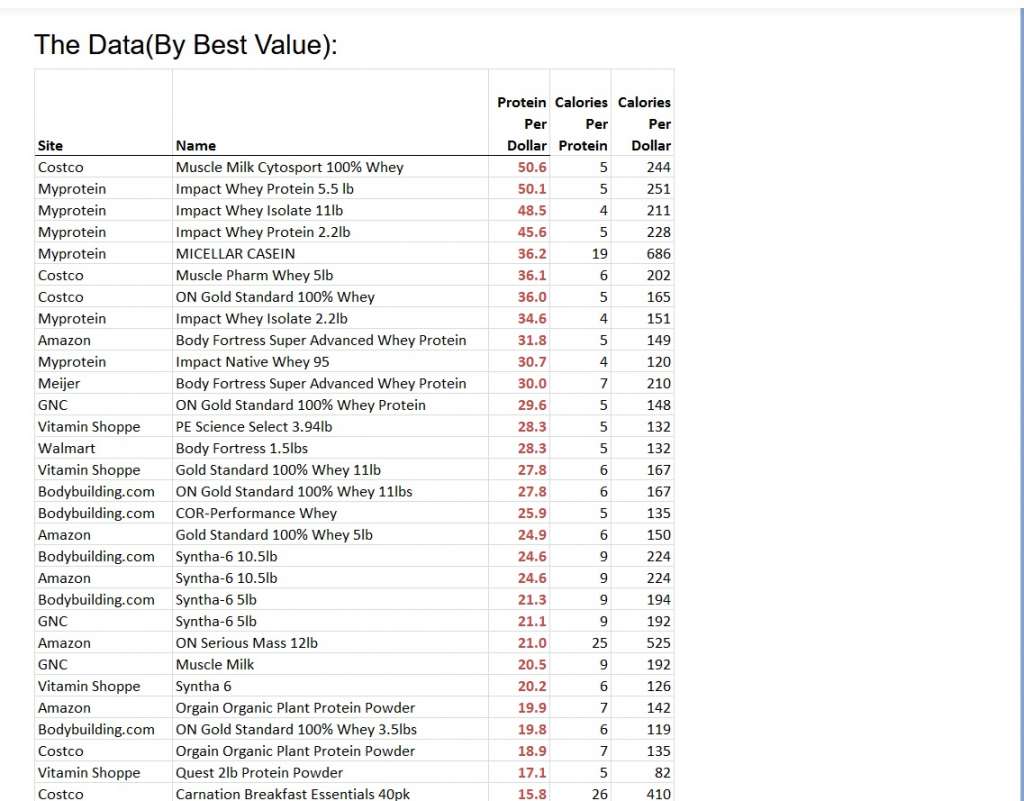
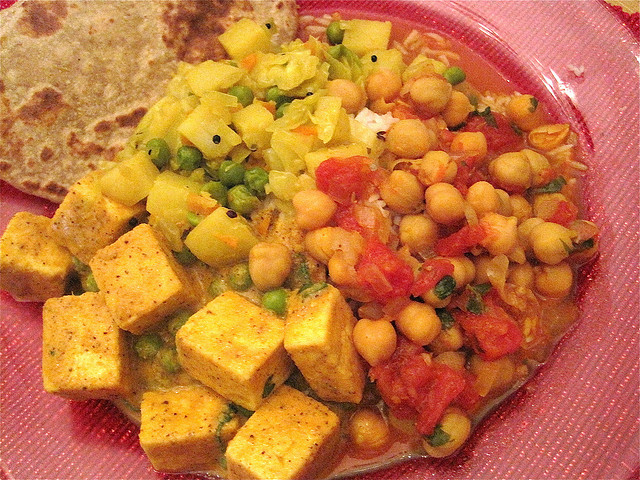
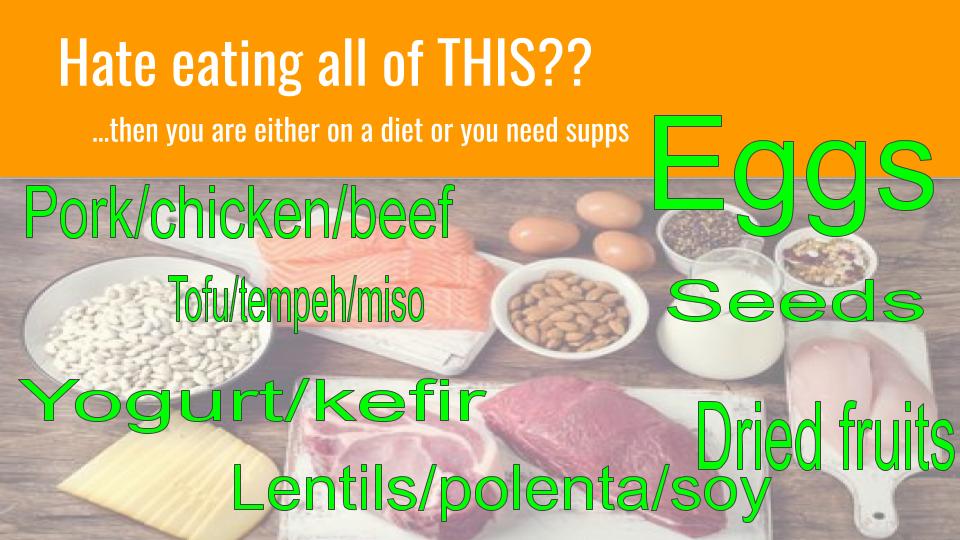 Choice dieting for performance
Choice dieting for performance